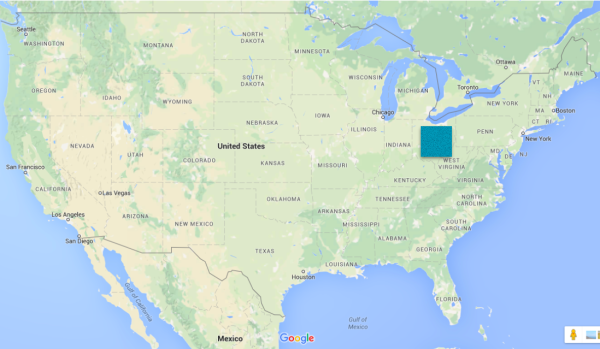The basic “green” project is to replace our current fossil fuel and nuclear power plants with a combination of solar and wind energy. The cost consequences of making this transition to less efficient forms of energy are almost inconceivable, but putting cost to one side, is it even possible? At Watts Up With That?, Tom Tamarkin and Barrie Lawson have authored one of the more entertaining scientific articles I have read in a long time. They actually undertake to do the math: what would it require to replace existing fossil fuel and nuclear power plants with solar energy as current plants are phased out over the next several decades?
There are many variables, of course. For example, if electric vehicles ever gain a significant market share, the need for electric power will be vastly greater. Here, as elsewhere, the authors’ calculations make optimistic assumptions. They write:
This paper explores the system requirements to replace this generation capacity with a photovoltaic only generation scheme. Topics include the definition of peak power demand, time of use issues, reserve power requirements, storage to provide power when there is no sunlight, and the various engineering challenges associated with managing a large area synchronous AC power grid.
This analysis considers the factors involved in dimensioning solar power generating plants. To illustrate the issues involved the example considers the case for supplying the entire electric power needs of the USA from solar energy without the use of fossil fuel, nuclear or other back up. To simplify the calculations, the example considers a single very large hypothetical solar power installation providing all the country’s power although in practice, generation would be dispersed in a network of smaller installations throughout the country, each one closer to the point of need.
Extensive calculations follow. You can work through the calculations and critique them if so inclined, but I will cut to the conclusion: if located in the Northeast, where power demands are highest, the necessary solar panels would “[cover] an area of 44,000 square kilometers or a square with sides of 210 km. Bigger than Denmark, the Netherlands or Switzerland.” If located in the Southwest, you could get away with a solar installation the size of Belgium, or 50% larger than Israel.
Just for fun, I created this graphic that shows a 210-km square superimposed on the Northeastern United States. Click to enlarge. Heck, we didn’t need Ohio anyway!
This actually understates the amount of land that would be needed for a functioning solar power system:
The total area covered by the solar array will be significantly larger than the area of the panels to allow for installation, maintenance access and periodic cleaning. The space required for the batteries is in addition to this.
Of course, the area consumed by the solar farm is only one aspect of the problem:
Note that If 1 square metre PV panels were manufactured at the rate of 1 per second, it would take 930 years to manufacture 29.3 billion panels.
And how about those batteries, which would be needed so you can turn lights on at night? The article includes a lengthy discussion of issues surrounding lithium batteries. It turns out that adequate battery capacity would be expensive:
To store 4,400 gWh would need 4.4 million of these 40 foot containers costing $3,300,000,000,000 or $3.3 trillion.
The batteries would take up a lot of space too. That’s another thing about “green” energy, it is environmentally awful:
For 4.4 million containers, the containers would cover an area of 130.8 million m2 = 130.8 km2 or a square with sides 11.44 km long; but adequate access space must also be provided, adding substantially to the total.The standard container exterior dimensions are 12.193 m X 2.438 m giving an area of 29.727 m2.
Then there’s this:
Note that if these 44 million containerized batteries were manufactured in China, it would take 587 round trips of twenty days each way on the largest container ships to deliver them to the USA.
One could tinker with assumptions forever, but the bottom line is blindingly obvious: for the United States to actually try to transition to solar power as its sole or principal source of electricity is in practice impossible. Moreover, the attempt, if made, would be an economic and environmental catastrophe. It isn’t going to happen. While not everyone understands the relevant mathematics and electrical engineering, even Barack Obama is smart enough to know that his hectoring the rest of us to do away with fossil fuels is total BS, intended only to enrich Democratic Party cronies who, in turn, subsidize Obama and his fellow left-wing office-seekers.
Steve Hayward, as you probably know, is a leading expert in environmental policy and may have more insightful comments than mine on the viability of solar energy as an alternative to our current system of producing electricity.

Notice: All comments are subject to moderation. Our comments are intended to be a forum for civil discourse bearing on the subject under discussion. Commenters who stray beyond the bounds of civility or employ what we deem gratuitous vulgarity in a comment — including, but not limited to, “s***,” “f***,” “a*******,” or one of their many variants — will be banned without further notice in the sole discretion of the site moderator.